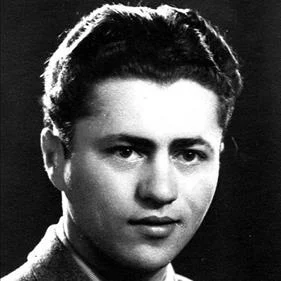Hillel’s Support for Refugees Isn’t New—It’s Really Old

Budapest native John Macsai was a prisoner at Mauthausen during World War II, when he saw a Jewish prisoner shot directly in front of him. That easily could’ve been him. Years later, Hillel International would offer him a new beginning – sponsoring an American university education for him and at least 100 other young Jewish Europeans.
Hillel’s student refugee program, launched in 1938, brought Central and Eastern-European Jewish refugees to the United States to study at American universities on scholarship. The program aimed to bring 20-25 refugees to the United States initially; two years after its founding, the program tripled its projection with 64 European refugee students immigrating to the states.
By the time Budapest natives Tom Lantos, Robert Diamant and John Macsai immigrated in 1947, Hillel had brought more than 120 students to American universities.
Diamant and Macsai immigrated to Ellis Island, eventually making their way to Miami University of Ohio (both were disappointed to learn they weren’t bound for sunny Florida). Each earned a bachelor’s degree in architecture in 1949. Both became successful architects in Chicago.
According to his son, Adam, Diamant (above, middle) supported many charitable organizations over the years, but when he died in January 2015, he left a donation in his will for only one institution – Hillel International.
“Hillel gave him a tremendous opportunity after he survived the Holocaust, for which he felt a lifelong debt —Hillel could not have made a better investment,” said Adam Diamant. “My father hoped Hillel would use his donation to provide opportunities for young Jewish refugees today as Hillel had done for him.”
Macsai agreed. “My life was made totally easy because of Hillel—financially, moral support and citizenship.” His love for Hillel runs in the family: His granddaughter, Emma Kaplan, serves as a Hillel International Springboard Fellow at Penn State Hillel—a two-year fellowship for recent college graduates focused on social media and innovation.
“I find it so amazing that our spectacular granddaughter who has always had strong Jewish roots ended up working for Hillel at Penn State,” Macsai said. (Macsai and Kaplan at right.)
Tom Lantos began his American success story at the University of Washington in Seattle, where he earned bachelor’s and master’s degrees in economics, and later, a Ph.D. in economics from the University of California, Berkeley. He became a California Democratic Congressman in 1980, serving in the House of Representatives until his death in 2008.
Lantos is the only Holocaust survivor in history who was elected to Congress.
Another participant in the Hillel refugee program, Michael Kesler, escaped from his hometown of Dubno, Poland in June 1941 with his sister.
Once safely resettled in the United States, Kesler earned two degrees in engineering from Massachusetts Institute of Technology and eventually completed a doctorate at New York University, he went on to enjoy a 50-year career in the petroleum industry.
At MIT, Kesler (at right) became very close with Maurice Zigmond, then-executive director of Harvard Hillel, who became Kesler’s “adopted father.” Kesler married his wife Regina in the Hillel director’s home. (Regina Kesler died of cancer in 1973.) “Young Jews are our hope for the future: that’s why I think Hillel is so important, and growing. I know that Hillel is doing the right thing,” said Kesler.
Kesler and his current wife Dr. Barbara Reed are active contributors to Hillel, and just attended the opening of the new $25 million Eva and Arie Halpern Hillel House at Rutgers Hillel, where Kesler’s step-daughter, Esther Reed, serves as a Conservative rabbi and senior associate director.
Many of the refugees remained friends and kept in touch their whole lives. On the 40th anniversary of their immigration to the United States, the group gathered for a reunion in Washington, hosted by Rep. Lantos.
Said Macsai: “My life was improved 100 percent because of Hillel.”